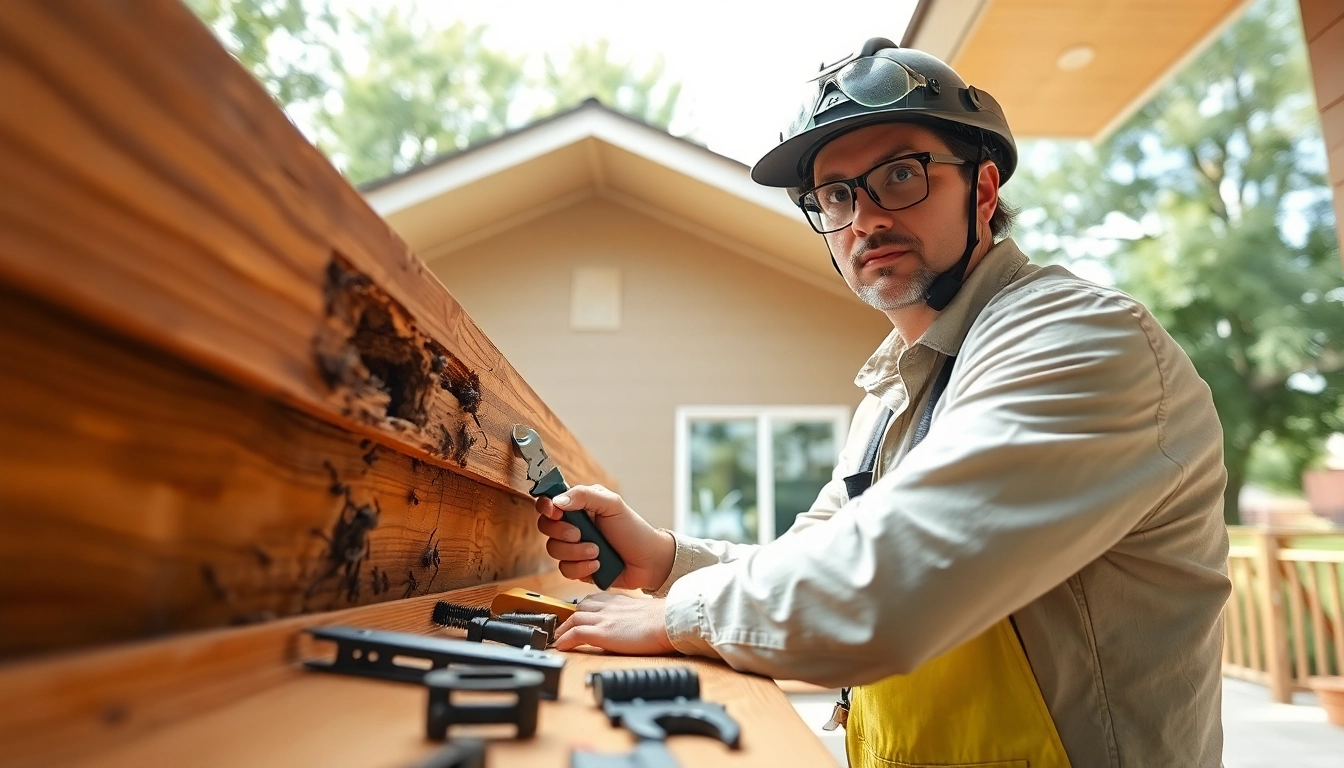Understanding Termite Treatments
Termites are more than just an inconvenience; they pose significant threats to homes, businesses, and the ecosystem. When it comes to termite problems, knowing your termite treatments options is essential for effective management. This comprehensive guide will explore various aspects of termite treatment, from understanding their behavior to evaluating your home for damage and outlining preventive measures.
What Are Termites and Their Threats?
Termites are social insects that thrive in colonies. They primarily feed on wood, which can lead to substantial structural damage if left unchecked. The key threats posed by termites include:
- Structural Damage: Termites can severely compromise the integrity of a building, leading to costly repairs.
- Economic Loss: Thousands of dollars in damage can occur if a termite infestation is not detected early.
- Health Hazards: While termites do not pose direct health risks to humans, their presence can facilitate mold growth from the moisture they introduce.
Common Types of Termite Treatments
Understanding the types of treatments available is crucial for effective termite management. Some of the most common termite treatments include:
- Liquid Treatments: This method involves applying liquid termiticides to the soil around a structure to create a chemical barrier.
- Termite Baits: Baiting systems lure termites to a bait station, where they consume a slow-acting insecticide and carry it back to the colony, effectively eliminating it.
- Fumigation: This comprehensive treatment involves sealing a structure and filling it with gas that eradicates termites already within the premises.
Signs of a Termite Infestation
Detecting a termite infestation early can lead to successful treatment and minimize damage. Look for these signs:
- Mud Tubes: Termites create tunnels out of mud to travel between their nest and food sources.
- Damaged Wood: Look for hollowed-out wood or areas that appear soft to the touch.
- Swarmers: Swarms of winged termites indicate that a colony has matured and is searching for new nesting sites.
Evaluating Your Home for Termite Damage
Conducting a thorough inspection of your home is vital in determining the extent of termite damage. Your strategy should focus on the following areas:
How to Conduct a Home Inspection
Start with a systematic approach to check for signs of termites:
- Visual Inspection: Examine the interiors and exteriors of your home for wood damage, mud tubes, and other signs of termites.
- Use a Flashlight: A flashlight can help reveal hidden signs in dark corners or basements.
- Probe Suspected Areas: Use a screwdriver or similar tool to probe damaged wood. If it feels soft or easily penetrates, you may have a termite problem.
Identifying Vulnerable Areas
Termites favor certain locations for infestations. Check areas that are often overlooked:
- Wood-to-Ground Contact: Any wood that touches the ground is at higher risk, such as beams and sill plates.
- Moisture Problems: Areas with poor drainage or excessive moisture attract termites.
- Landscaping Features: Mulch, soil, or wood piles near the foundation can serve as bridges for termites.
Using Technology in Inspections
Advancements in technology offer new methods to detect termite activity that are less invasive:
- Moisture Meters: These can help identify areas with high humidity that are conducive to termites.
- Infrared Cameras: Used for thermal inspections, these cameras detect heat patterns that may indicate termite infestations.
- Acoustic Sensors: By listening for the sounds of termites feeding, inspectors can locate hidden colonies.
DIY vs. Professional Termite Treatments
Homeowners often wonder whether they should tackle termite problems themselves or hire professional pest control services. Here’s a breakdown of when to choose each option:
When to Consider DIY Methods
If the infestation is identified early and is localized, DIY treatments can be effective. Consider these methods:
- Liquid Insecticides: Available at hardware stores, these can create barriers in the soil.
- Bait Stations: Installing bait stations can help monitor and eliminate small infestations.
- Natural Remedies: Some homeowners use solutions like vinegar or orange oil as a less toxic method.
Benefits of Professional Services
Hiring professionals can have distinct advantages:
- Expert Knowledge: Professionals can identify and treat infestations with greater accuracy.
- Long-term Solutions: Many companies provide warranties for their services, ensuring long-lasting protection.
- Advanced Techniques: They have access to treatments that may not be available to the general public, such as fumigation.
Cost Analysis of Treatment Options
When considering either DIY or professional treatments, understanding the costs involved is crucial:
- DIY Solutions: Costs can range from $20 for a simple liquid treatment to $200 for bait stations.
- Professional Treatments: These can range from $300 to over $2,000 depending on the severity of the infestation and the methods used.
- Consideration of Long-term Value: While DIY might seem cheaper, future damage from an unresolved infestation can lead to much higher costs.
Prevention Strategies for Homeowners
The best approach for managing termites is prevention. Homeowners can take proactive steps:
Best Practices for Termite Prevention
Implementing simple modifications around your property can significantly reduce the risk of infestations:
- Keep Wood Away From Ground: Ensure that any wooden structures are elevated and do not contact the soil.
- Address Moisture Issues: Repair leaky pipes and improve drainage around your home.
- Sealing Entry Points: Caulking gaps in walls, around windows, and doors can block termites from entering your home.
Regular Maintenance and Inspections
Establishing a routine maintenance schedule can help detect termites before they become a significant issue:
- Annual Inspections: Professional inspections should be performed at least once a year.
- Keep Records: Maintain documentation of any treatments performed and inspections conducted.
- Engage with Neighbors: Coordinate inspections with neighbors as termite issues may not respect property lines.
Using Barriers and Chemical Treatments
Chemical barriers are an effective means of keeping termites at bay:
- Soil Treatments: These create a barrier that prevents termites from reaching your home.
- Physical Barriers: Installing steel mesh or other materials during construction can deter termites.
- Regular Reapplications: Ensure that chemical barriers are maintained and reapplied as necessary.
Future Trends in Termite Control
Pest control technologies are evolving, and several trends are emerging that homeowners should be aware of:
Emerging Technologies in Pest Control
Technological advancements are transforming termite control methods:
- Smart Sensors: Installation of smart sensors can alert homeowners to moisture changes indicative of termites.
- Drones: Aerial inspections can cover large areas quickly, identifying potential infestations early.
- Biological Controls: Research into natural predators of termites offers an eco-friendly alternative to chemicals.
Eco-Friendly Treatment Options
With growing environmental concerns, eco-friendly treatments are gaining popularity:
- Alternate Chemicals: Some contractors are using less toxic pesticides that are still effective against termites.
- Natural Predators: Utilizing nematodes and other biological agents can help reduce termite populations.
- Integrated Pest Management: This holistic approach combines preventative methods, monitoring, and targeted treatments.
Predictive Models for Infestation Control
Future termite management may involve predictive analytics:
- Data Analytics: Using historical data to predict future infestations based on environmental conditions.
- Machine Learning: AI applications can learn from patterns, helping professionals identify hotspots for termite activity.
- Risk Assessment Tools: Tools that evaluate property risk based on specific conditions can guide homeowners in their preventive measures.



